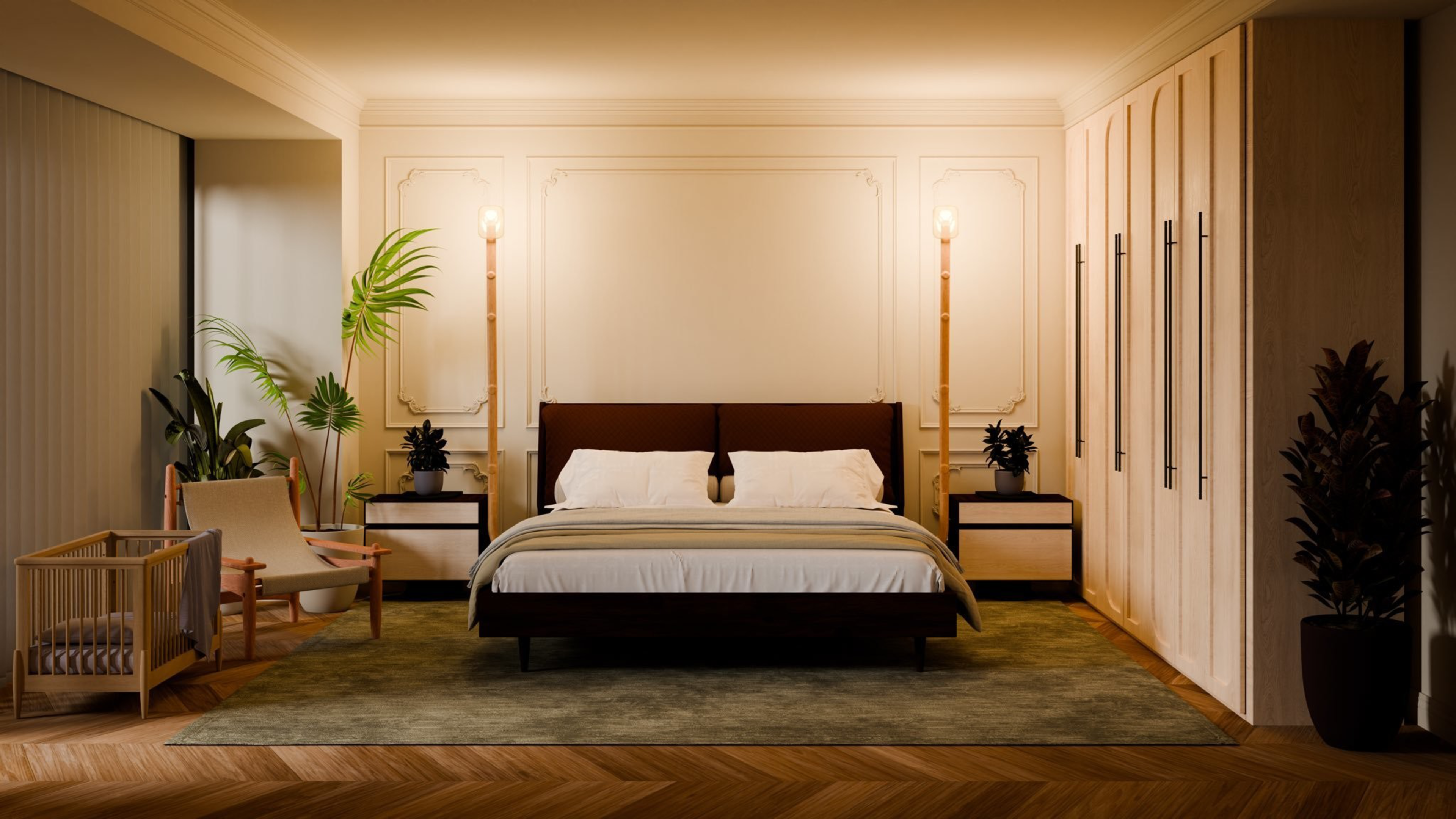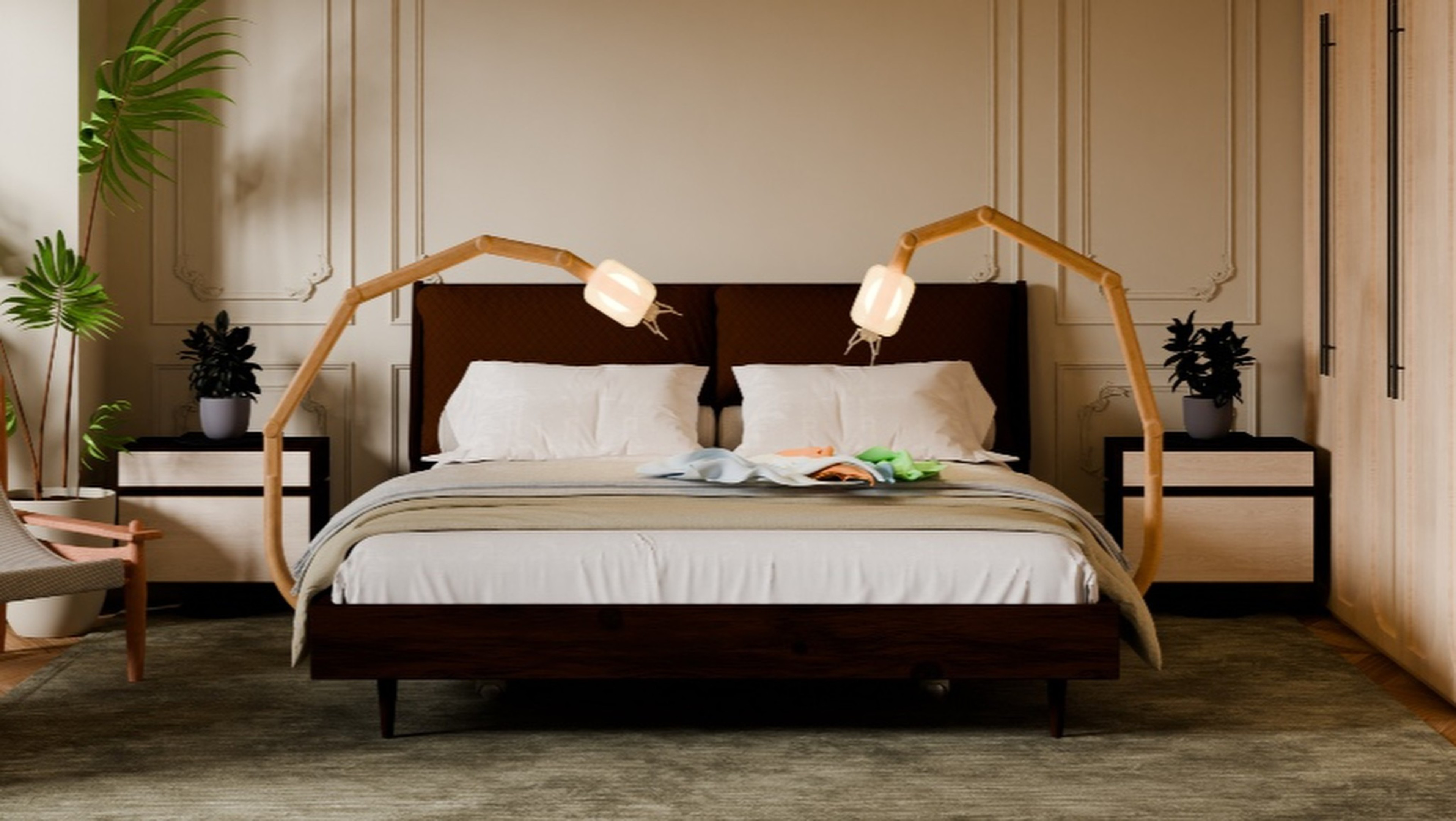Aaron Tan, a robotics researcher at Stanford, this week posted a teaser video introducing Lume, a robot he has been building. In the video, Lume is disguised as a pair of tall bedside lamps, which quietly bend down and extend two robotic fingers that get to work folding laundry.
It’s an impressive display. Also a weird one. And a little freaky. The 31-second clip racked up 3.8 million views within 48 hours. Some people loved it. Others weren’t sure, sharing the video with comments like “How legit/far along is this?” and “You could be the next Tesla."
Naturally, we were intrigued, so we called Tan to find out, like, what the hell, and when can we get one of these?
An expert in decentralized robot exploration and robot vision language, Tan told us why he built a laundry-folding lamp, how it works, and why it definitely won’t give you a back rub.
This interview has been edited for clarity and length.
Let’s start with the obvious: Is that video real or AI-generated?
It’s a render, a 3D model that we built to paint a picture of how we think robots can fit into the home. It’s made to look aesthetically pleasing.
So, do you have a real robot?
Yes, we have the physical prototype right now in a garage in San Francisco. The robot is not as slim as it needs to be. We're going to iterate on that to really bring it to this sexy, beautiful design that you see today.
How did this come about?
I recently finished my Ph.D. in robotics at the University of Toronto in Goldie Nejat’s lab, focused on human/robot interaction: how robots coexist with humans in society. I worked with fellow grad student Angus Fung, and when we finished, we wanted to keep working together in robotics. They have so many benefits in the home and can unlock so much time for people. So we took a stab at this with Lume.
What gave you the idea for a lamp robotic arm?
This whole thing was inspired by “Beauty and the Beast.” In the movie, the furniture comes alive, right?
Our overall mission is to build robots in a way that blends beautifully into a personal space. Right now, that looks like robotic furniture. Lamps are a great way to hide robotics in plain sight and a great way to put robots into the home without making your home look like a factory.
The Lume will be the first introduction to robots that blend into your home. We wanted it to have a single purpose, and stay out of the way until needed, like a dishwasher.
The initial use case is quite simple: You take your clean laundry in a laundry basket from the dryer, you dump it on the bed, you walk away, watch a movie, or whatever. When you return, the clothes are folded into neat piles, and all you have to do is put it away. The term I use is “ambient robotics,” where robots sort of work in the background, and you don't see them, but your chores get done.
Why did you decide to tackle laundry first?
I hate doing laundry. I absolutely hate doing it. It takes so much time. In 2025, the washing is automated. The drying is automated. Why are we still standing around folding laundry? Laundry is the only chore where you either don't do it or you have to manually do it. There's no alternative solution to make it faster or easier.
We talked to a bunch of people, and we found out that folding laundry consistently was in the top two most annoying chores for everyone.
What was the other most annoying chore?
Cooking.

Walk me through how it works.
There are cameras at the wrist of the robot hand, which is concealed by the lamp hoods. When the robot is not functioning, it operates as a standard floor lamp, and the lamp hood covers both the robot hand and the camera — it acts like a mechanical shutter for privacy and safety. Only when it's activated — via voice controls or an app — does it reveal the camera and robot hand, which then detects laundry and starts folding.
It's very much in the user's control. It's not supposed to be sentient. It's not supposed to be smart. It's not just going to be like, “Hmm, I think it's time I start folding.”
What about “adult” use cases? A lot of people on X pointed out that those are two hands by a bed, after all. Could it be used for other in-bed activities?
No.
Do you think people might still try to hack it for sex?
It would be really hard — they’d need a Ph.D. to hack the lamps.
So the Lume will do no touching at all?
We are looking at this. A back massage is something that a lot of people have requested. But other startups are working on this. And we want to avoid any kind of human contact to start, for safety reasons.
We want to get really good at handling soft objects — clothing — where, if you drop a T-shirt, nothing's going to happen. But anything with human contact and you’re venturing into a realm where, if it malfunctions, worst-case scenario, you hurt someone. So we're being careful.
How has Lume been received?
We have a lot of preorders, a lot higher than we were expecting. Like, in the five digits. Laundry is a chore that really resonates with people. Everybody's like, “How can I get this sooner?” “Can I be an early tester?” People were like, “Here's my Instagram account, Here's my TikTok. If you send me a version first, I'll do a free promo for you. I need this in my home right now. I can't wait till 2026.”
How much will it cost?
We’re looking at a sub-$2,000 price tag per unit. We are thinking about a potential option where you buy the lamp and laundry folding is a feature upgrade, like Tesla FSD. Otherwise, it's a beautiful pair of lamps. It will be shipped in 2026.
Many tech companies are going the humanoid robot route. Why did you diverge from that?
Big Tech is trying to make robots look human — like the Tesla Optimus robot — and force them into people’s homes. But what would happen if a humanoid was in your home — like, a person that can roam freely, sits on your couch, has twice your speed, twice your strength, has above-average IQ, and is controlled by some person sitting in a Big Tech office?
We’re building it for people who don't want to share their space with a humanoid robotic roommate.
When we designed Lume, we wanted to do the exact opposite. We didn't want the robot to freely roam. We want the robot to be static, whether it’s next to your bed or a couch in the living room.
We don't want to equip it with super intelligence. It shouldn't have general knowledge about the world. It should just have knowledge about the task that it needs to do, and for us, it's laundry folding. It shouldn't know how to, like, cook a meal for you, or play a game with you, and all this kind of stuff.
We are really just trying to build a tool rather than a human replacement.
